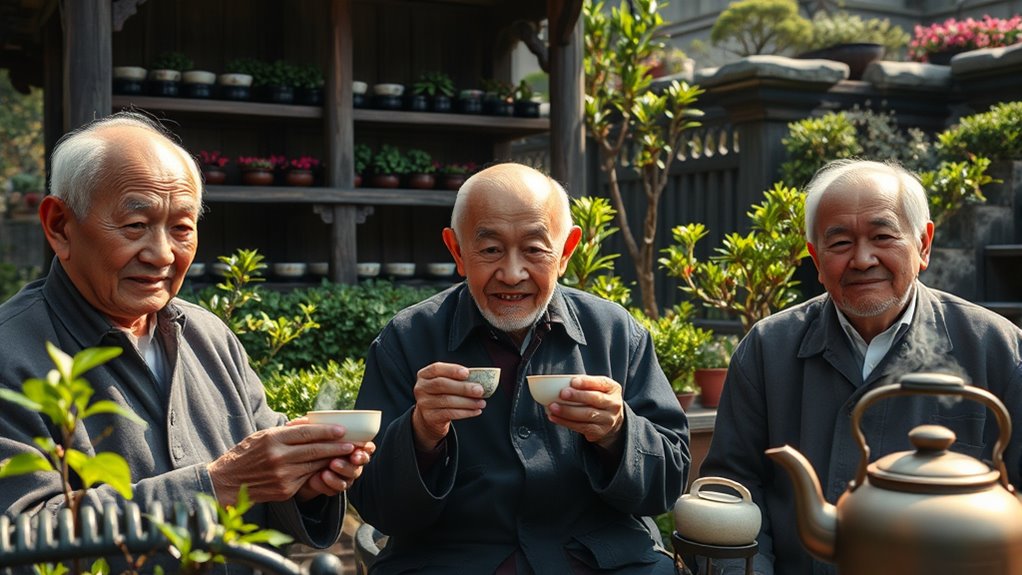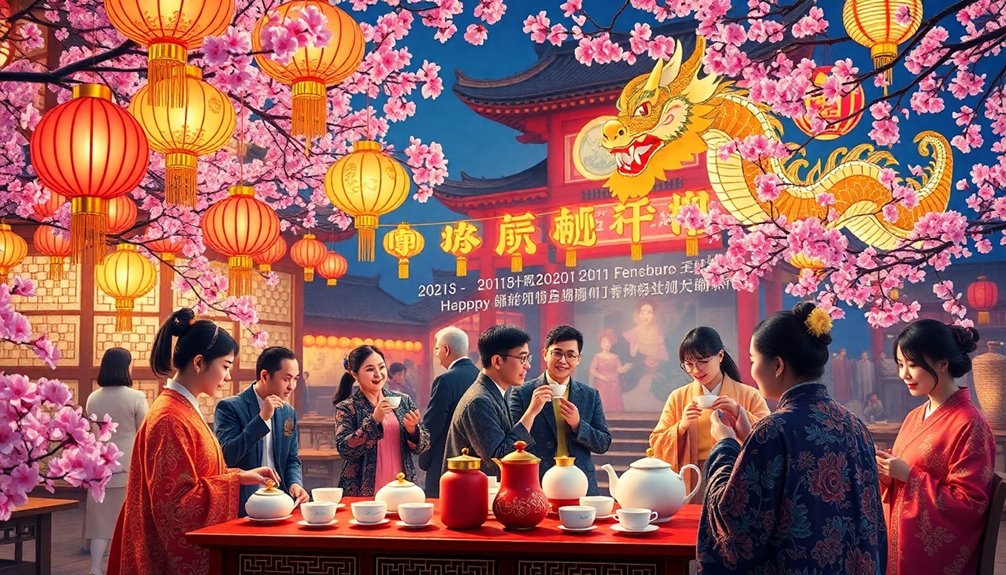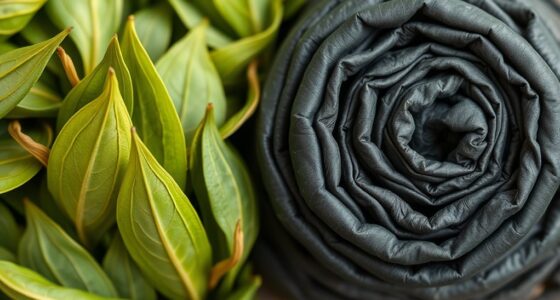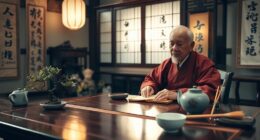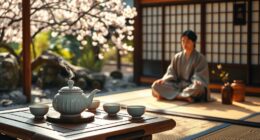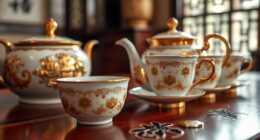Meet the dedicated tea masters tirelessly reviving China’s ancient cultivars, seeking out rare varieties in remote mountains and traditional farms. They use meticulous techniques to preserve the unique flavors and historical craftsmanship tied to each plant. By restoring these ancient cultivars, they protect China’s rich tea heritage, ensuring it thrives for future generations. If you explore further, you’ll discover how their efforts celebrate and sustain China’s diverse cultural and agricultural legacy.
Key Takeaways
- Tea masters actively seek out and restore ancient cultivars from remote regions to preserve China’s tea heritage.
- They utilize meticulous propagation techniques to maintain the genetic authenticity of rare old varieties.
- Many risk personal resources and time to locate, revive, and protect historic cultivars at risk of extinction.
- Masters blend traditional cultivation with modern methods to honor history while innovating tea production.
- Their efforts support cultural preservation, protect genetic diversity, and sustain China’s rich tea craftsmanship for future generations.
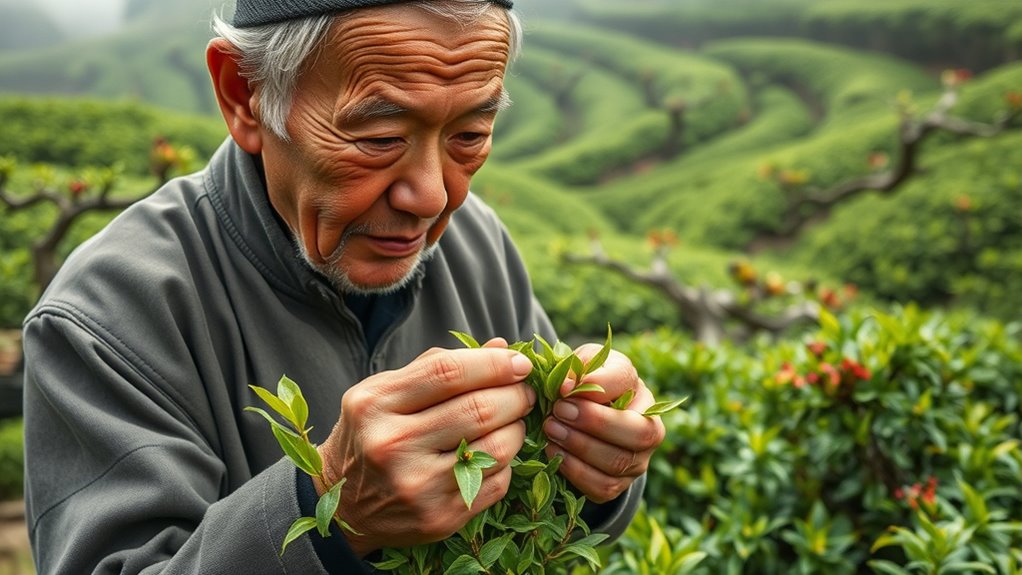
In recent years, tea masters across China have dedicated themselves to reviving ancient cultivars that once defined the country’s rich tea heritage. This movement isn’t just about restoring old plants; it’s about safeguarding a crucial part of China’s cultural identity. You might not realize it, but each cultivar holds unique flavors, aromas, and characteristics shaped by centuries of tradition and specific regional climates. By focusing on heritage preservation, these experts aim to rescue varieties that risk fading into obscurity amid modern agricultural practices. This effort ensures that the diverse genetic pool of Chinese tea plants remains intact, supporting not only the cultural significance of these cultivars but also their resilience against pests and changing weather conditions.
You’ll find that cultivar diversity is at the heart of this revival. Many ancient cultivars are highly adaptable and produce distinctive qualities that newer varieties can’t match. These plants are often more than just a source of flavor; they’re living monuments to local history and craftsmanship. As a tea enthusiast, you might appreciate how each cultivar’s unique traits contribute to the complexity and richness of Chinese teas, from delicate greens to robust blacks. Preserving this diversity means keeping alive a spectrum of tastes that reflect different regions, climates, and traditional processing methods. It’s a way to maintain a connection to the past while enriching the future of tea production.
Tea masters actively seek out these ancient cultivars in remote mountains and traditional farms, often risking their own resources to do so. They understand that every plant saved is a piece of history preserved. Some of these cultivars have been cultivated for hundreds of years, handed down through generations. Restoring them involves meticulous propagation methods, ensuring that the genetic integrity remains unaltered. In doing so, these experts not only protect genetic diversity but also foster innovation—by blending ancient traits with modern techniques, they create teas that honor tradition while appealing to contemporary palates.
This revival movement is more than preservation; it’s a celebration of China’s diverse agricultural heritage. By supporting the cultivation of ancient cultivars, you’re helping sustain local farmers and traditional knowledge that might otherwise disappear. It’s a conscious effort to keep alive the stories, flavors, and techniques that make Chinese tea unique. These tea masters serve as guardians of a legacy that’s as much about cultural identity as it is about taste, making sure that future generations can continue to enjoy the rich tapestry of China’s ancient tea heritage.
Frequently Asked Questions
How Do Tea Masters Select Which Ancient Cultivars to Revive?
You might wonder how tea masters choose which ancient cultivars to revive. They consider genetic diversity to preserve unique flavors and traits, ensuring a resilient and rich variety. Market demand also plays a role, guiding them to select cultivars that appeal to consumers and fit current tea trends. By balancing these factors, they revive cultivars that are both historically significant and commercially viable, maintaining the heritage while satisfying modern tastes.
What Challenges Do They Face in Cultivating Traditional Chinese Tea Varieties?
You face challenges like pest management and soil preservation when cultivating traditional Chinese tea varieties. For example, a tea master might struggle to keep pests away without damaging delicate cultivars. You need to balance using organic methods and maintaining soil health, which can be tough with aging plants. These efforts require careful planning and dedication to preserve the authenticity and quality of ancient cultivars.
Are These Revived Cultivars Available to the General Public?
You might wonder if these revived Chinese tea cultivars are accessible to you. Generally, they’re available through specialized tea shops and online purchasing options, but availability can vary. Some cultivars are limited and hard to find, so you may need to seek out dedicated retailers or online vendors who focus on rare or traditional teas. Keep in mind that quality and authenticity are key when selecting these unique varieties.
How Do Ancient Cultivars Differ in Flavor From Modern Teas?
Ancient cultivars offer unique flavor profiles compared to modern teas, often featuring richer, more complex tastes. You’ll notice nuanced earthy, floral, or fruity notes that reflect traditional cultivation techniques. Modern teas tend to have a more uniform flavor, benefiting from advanced cultivation methods. By exploring ancient cultivars, you experience the distinct character shaped by centuries-old practices, making each sip a journey into history and craftsmanship.
What Impact Does Reviving These Cultivars Have on Local Communities?
You’ll find that reviving ancient cultivars fosters cultural preservation and sparks economic revitalization. When you support these efforts, you help sustain local traditions, stories, and skills, strengthening community bonds. Plus, by boosting tea tourism and sales, you create new opportunities for farmers and artisans. This process invigorates local livelihoods, preserves heritage, and promotes pride, proving how reviving old cultivars benefits both the community’s culture and its economy.
Conclusion
As you explore these tea masters’ efforts, imagine their dedication breathing new life into over 1,000-year-old cultivars. Their passion helps preserve China’s rich tea heritage, and with each carefully cultivated leaf, you’re witnessing history in the making. Picture these ancient plants thriving again, offering flavors that connect you to centuries of tradition. By supporting their work, you’re part of a movement that keeps China’s timeless tea legacy alive for generations to come.

